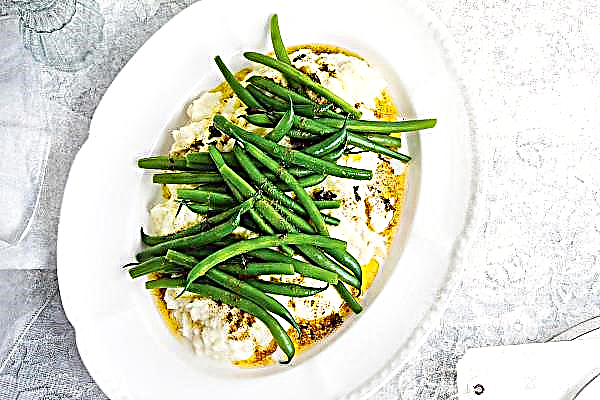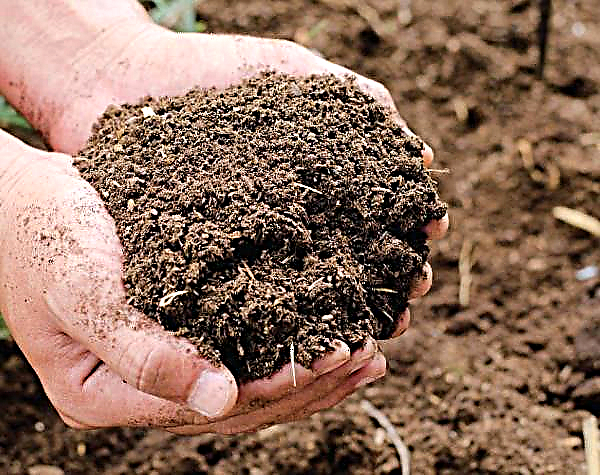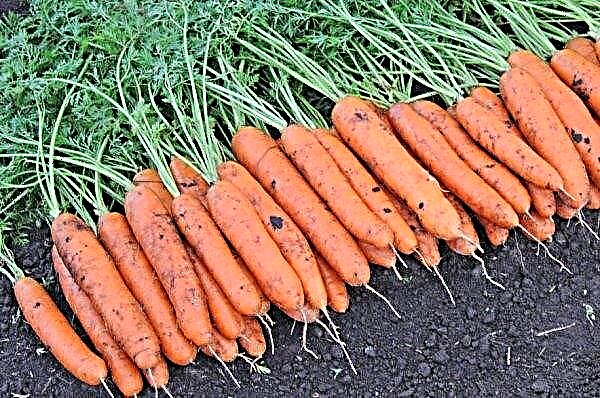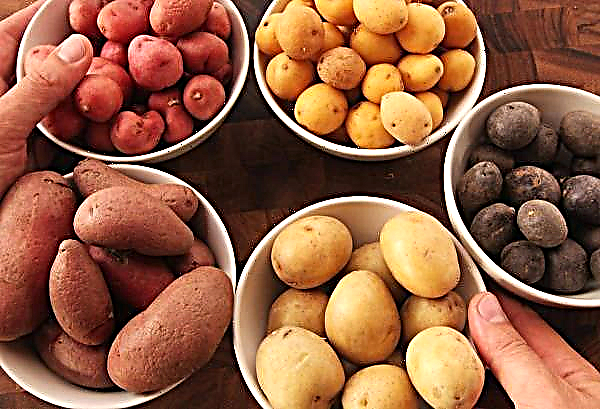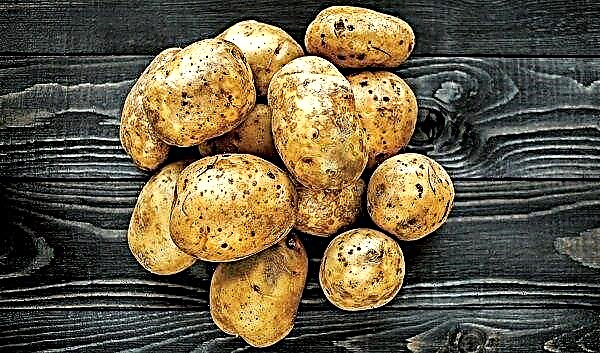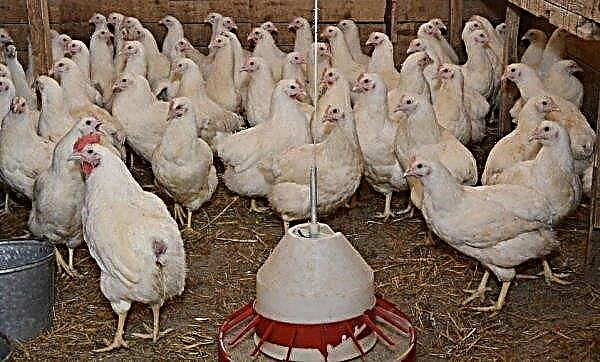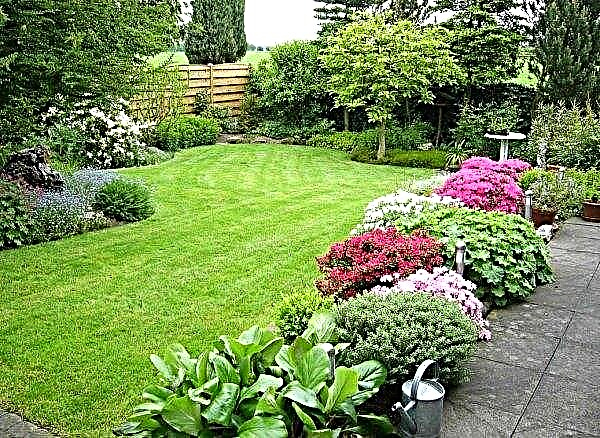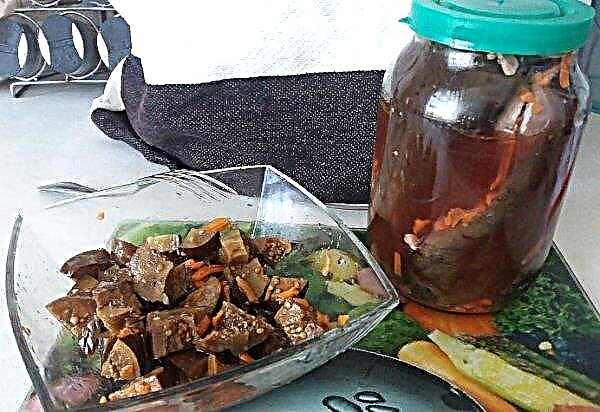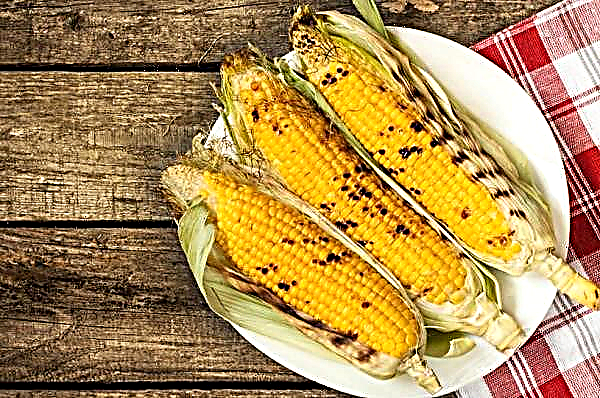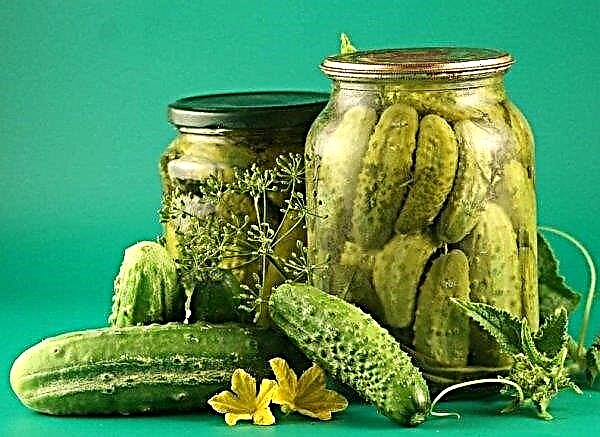Living fence is increasingly used in landscape design. Fashion in this direction changes regularly, but one element remains unchanged - a fence made of living material. Increasingly, gardeners are replacing massive stone structures with a living barrier. How to plant a hedge of thuja Brabant, what is the advantage of this variety, as well as about the features of further care, will be described later.
Benefits of Thuja Brabant for Hedgerow
Growing green hedge from thuja today has become a popular activity. And this is explained simply: the plant is durable and undemanding. From the crown you can create all kinds of figures (arches, balls, etc.) that will delight the whole year. In addition, the thuja tolerates pruning and retains its shape for a long time. The main objective of the fence is to protect the site from uninvited guests and inquisitive eyes. Tuevoy tree copes with this perfectly: it grows up to 12–20 m.
Did you know? Thuja belongs to centenarians. It can grow for almost 800 years.
Among other important functions of the thuja note:
- snow mass retention;
- air saturation with ions;
- creating a relaxing atmosphere;
- protection against debris and wind.

As a live defense, it is very good to grow the Brabant variety (Thuja occidentalis Brabant). It grows rapidly, up to 40–50 cm per year, and reaches a height of 8–15 m. The crown volume is 2–3 m. The planted Brabant grows wide, forming a dense plant link. Thanks to this ability, not a simple hedge is created from a plant, but it is decorated with various figures.
Hedge landing
Variety Brabant prefers shade and partial shade, so planting in an open area is undesirable. Although, many gardeners note that the plant grows well in the sun, but it will need to be watered more often.
Landing time
Thuja can be planted both after winter and in early autumn. But gardeners note that the autumn procedure has the main advantage: the plant has time to take root before the cold, and in the spring it will continue to grow immediately.

Selection of seedlings
Thuja can propagate by seeds and seedlings, but it is better to plant cuttings. From seeds, the plant grows frail and often does not take root. When choosing cuttings, first of all, the root system is examined: it must be intact and healthy.
The branches should be strong, elastic, the needles should not crumble, it should be clean, without spots or traces of the disease. The cuttings should be transported carefully so as not to injure branches and roots. The rhizome should be in an earthen coma, which, when transplanted to a permanent place, is preserved.Important! To obtain a viable thuja, seedlings must be chosen in the nursery.

Distance between seedlings
The main rule when landing: the optimal interval. The best distance between the cuttings of the thuja Brabant is 1-2 m.
Landing methods and schemes
The fence can be planted on one line, or a two-tier fence can be made. Then the cuttings can be placed closer - after 0.5 m, and between the rows leave an interval of 1 m. In this case, the cuttings must be planted in a checkerboard pattern. Tuyu Brabant is not recommended to be planted in three rows - the middle chain may die. To grow the tree more actively, nitrophosk and ash are added to the soil.
Did you know? Tuyu is considered a healing tree. It impregnates the air around with antimicrobial components - phytoncides.
Soil preparation
The Brabant variety is unpretentious to the composition of the soil. You can make a live fence anywhere in the garden. The only caveat: if the soil composition on the site is too clay, you will have to provide good drainage (chipped brick, expanded clay) when planting.

Poor soil is diluted with turf, peat, an organic mixture and sand. If loamy - half the soil should be replaced with peat mix and loam, taken in equal parts. If the site is peat bog, half the soil is replaced with turf soil and sand. Of course, the site should be freed from weeds.
Did you know? The second name of the thuja is "the tree of life." And the Latin name has an ancient Greek beginning, meaning "incense", "sacrifice."
Step-by-step landing instructions
It will be easy to plant a thuja Brabant subject to such a scheme:
- Mark on the site the line on which the seedlings are supposed to be planted. They do this either simply by spreading the cord on the ground, or by pulling a rope over the pegs.
- 3-4 days before disembarking, dig a trench or pit along the planned line (the ground should be saturated with oxygen). Depth should be 80-100 cm, and the width depends on the diameter of the roots.
- Release the roots from the cover. Do it right in the pit.
- Place the root neck in line with the surface. If this condition is not met, the tree will not be able to grow, it will constantly rot or dry out.
- Cover the roots with soil. Trample the soil around so that no voids form.
- Water well. Moisture must penetrate to the roots.
- Cover the soil with mulch. It will retain moisture and protect young roots from freezing.

Care
Despite the fact that thuja is an easy-to-care plant, it needs maintenance, which includes a set of standard procedures.
Watering and sprinkling
In the first month after planting, irrigation is carried out regularly, 1-2 times a week. When watering use this weekly rate: 1 liter of water for every 20 cm. In dry weather, the seedling is watered twice a week. Since thuja is an evergreen plant, moisture also evaporates in the winter, so during the winter drought the green fence also needs to be watered.
Since the crown evaporates a considerable amount of moisture, it is recommended to use a sprinkler system. This is the only way to grow a beautiful green fence. The sprinkling procedure will not only wash away the garbage, but also enliven the opening of the holes in the epidermis of the leaves, which, in turn, promotes gas exchange and improves the appearance of the arborvitae.
Sun protection
The young Brabant variety has a need for shelter from sunlight, not only in the warm period. At first it was covered with a special awning.
Did you know? Record hedge 530 m long grown from beech. It is located in Scotland and is pruned every 6 weeks.
Top dressing
The first two seasons after planting, the soil near the thuja is fed with combined phosphorus-potassium preparations with magnesium. The norm for 1 m² is 25 g.
Then 2-3 times per season you need to feed the soil. The first time in the winter - with manure (1 liter per 1 m²). Feeding is stopped in August, as the plant begins to prepare for winter, and excessive nutrition during this period can lead to the destruction of the root system.
Important! If long-acting fertilizers were applied during planting, start feeding from the third spring.
Pruning
Thuja Brabant haircut is a must. Perform it in the spring, with the awakening of the kidneys, and in the fall. At the same time, sanitary pruning is done: old and damaged branches are removed. You can create a crown to your taste, but you always need to cut it on the same line. Young trees are pruned twice a year, plants older than three years - 3 times a year. When cutting use secateurs. It should be quite sharp so that the shoots are cut without creases. The branches are cut to the site where the growth started after the previous haircut. In this case, the young part of the escape in any case should remain. The more Thuja Brabant loses, the more actively it will grow. When cutting, be sure to ensure that the top of the plant is narrower (in the shape of a trapezoid). The result is a beautiful living fence.
When cutting use secateurs. It should be quite sharp so that the shoots are cut without creases. The branches are cut to the site where the growth started after the previous haircut. In this case, the young part of the escape in any case should remain. The more Thuja Brabant loses, the more actively it will grow. When cutting, be sure to ensure that the top of the plant is narrower (in the shape of a trapezoid). The result is a beautiful living fence.
Loosening and mulching
Nutrition of the soil with oxygen and a sufficient moisture content are significant for any plant, so the procedure of loosening and mulching is mandatory. It is extremely important to do this the first few seasons after planting.
Loosen the soil after each watering, shallow, so as not to injure the root system. The first soil treatment and mulching is done a month after planting. As mulch use peat, wood chips or leaf humus.

Shelter for the winter
Thuja needs protection from winter precipitation. Since the branches of this plant grow in a vertical direction, the snow mass accumulated on them presses and breaks out the shoots. The trunks are ligated in such a way that snow does not accumulate.
Tie thuja with soft material. You can’t pack branches too tightly - the needles inside will begin to bark. Low (up to 1.5 m) trees are best covered with a hut. A tripod is formed from wooden bars and wrapped in burlap.
 If the winters are cultivated in the thuja Brabant cultivation region, the roots should be covered with dry grass, spruce branches or special material for the winter period.
If the winters are cultivated in the thuja Brabant cultivation region, the roots should be covered with dry grass, spruce branches or special material for the winter period.
Diseases and Pests
Basically, the appearance of the thuja Brabant can deteriorate due to illness. Closer to autumn, the needles of the tree become brownish. Do not worry right away. But when the process of browning or yellowing occurred during the period of intensive vegetation, the plant may be infected with a fungus. In this case, all infected shoots are cut and cleaned blackened areas. Crona is treated with a special drug (Fundazole, etc.). For the purpose of prevention, in the spring and before wintering, thuja is worked out with insecticides.
Important! If there is a fungal disease during the treatment, the sprinkling procedure is not used.
The most dangerous pests for thuja are:
- mite;
- bark beetle;
- false shield;
- speckled moth (in the larval phase);
- aphid.

To control pests, such drugs are used:
- "Aktara";
- "Actellicus";
- Antio
- "Decis";
- "Karbofos";
- Fitoverm.
Video: thuja diseases and their treatment
As you can see, in just a few years you can grow a beautiful green fence on your site using the Brabant thuja. Simple methods of landing and fairly simple care will help minimize the effort spent even in adverse weather conditions. And your work will certainly be rewarded with lush greenery.

